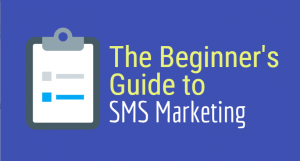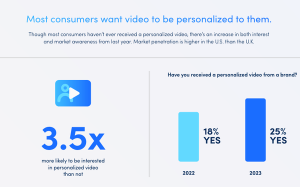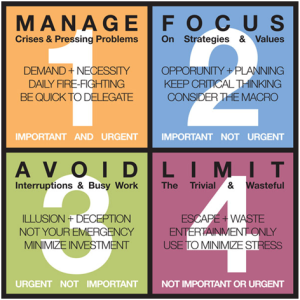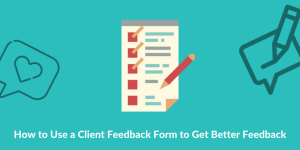Many people, including myself, use email subscriptions to stay in touch with our favorite companies and bloggers. We sign up for weekly blog articles, newsletters and other email content. When we subscribe, it is our expectation that the emails we receive and the steps that follow are ethical, so when there’s a problem in this process, it can cause a seriously negative impact on your email marketing and image as a whole.
In this article, I share five email marketing practices that you need to adjust or stop doing immediately in order to fix current or prevent future issues. Each item has three sub-items to explain further what I mean.
1) Subscription Process Flaws
Opt-in Process
I’ve subscribed to several blogs. I sign up on their blog or article page because I want to be notified of future articles. However, with larger websites, they don’t give me the option to choose what type of content I wish to receive. As a result, I’m bombarded by emails advertising future webinars and conference discounted pricing deals.
When you offer multiple types of content from your website, make sure you give subscribers the option to choose which content we want to receive. Otherwise, you are taking a huge risk with unsubscribe rates.
Sign-up Fields
When I see a subscription sign-up process that requires more than 3-5 fields and even takes more than one page to finish, I don’t complete the process. I’m not a company. Most subscribers are individuals. Why would you ask all these questions about our company and not questions about us?
My best suggestion is to follow the “less is more” approach to your sign-up form. Instead of asking about company type, size and revenue, focus on the individual who is subscribing so that you can customize your emails to us as people.
Welcome/Thank You Email
With every subscription I’ve signed-up for, I’d say less than half sent out a welcome or thank you email. While I don’t really want to be bombarded by excess emails, an email welcoming me or thanking me for signing-up would be a great way to confirm my subscription. I sometimes receive a secondary email that asks for me to confirm my subscription, and I like that approach, too.
When you get a new subscriber, do you send them a welcome or confirmation email? You can greatly benefit from a confirmation email because it tells you if the subscriber is serious about the subscription. This means your emails are less likely to be marked as spam and more likely to be opened. Let your readers know you’re grateful for their interest with a welcome email, and consider offering some form of freebie along with it.
2) Follow-Through Flaws
Email frequency
As a dedicated blogger myself, I’ve chosen to post only once a week, meaning my subscribers only receive one email from me every Monday. While several other bloggers and companies might publish more than one article a week, I think it’s best to create a collection of posts during the week and share them with subscribers on only one designated day. That way, you aren’t overwhelming subscribers with emails.
On the other hand, giving people the ability to choose a preferred email frequency would be ideal. Let us choose if we want daily or weekly emails.
Email formatting
I’m still getting emails that are not formatted to fit a mobile screen or even any screen for that matter. I have one blogger who has emails that cut off on the right side, and I’m even using a computer browser. This looks very sloppy to me, and it makes it hard to click on the links.
When you’re setting up your emails, send test versions to yourself and check them on mobile devices as well as different browsers. If the email doesn’t appear correctly, fix it before sending the final version out.
Checking satisfaction level
This hasn’t really happened for me with my subscriptions, but it is a great way to measure what you can do better and what you’re doing right.
Send out a survey that is quick and easily accessible from your email. Make sure that you stick to mostly multiple choice or equivalent, but also have at least one question that gives participants the ability to write their opinions freely. I suggest using Google Forms for this if you have the time to analyze results manually, but if you have the funds, use Survey Monkey for easier analysis.
3) Database Management Flaws
Clean up and maintain database
Many email marketing services will help you with this, but sometimes, that’s not enough. Sometimes, it’s best to go through your subscribers, clean them up, and update your different lists.
If you only have one list that you send every email to, that’s a risky approach. Depending on what you’re sending and how often, you might want to consider creating different lists for different purposes. You also want to make sure your list subscribers are in the right place. Check on this regularly to ensure your database is up-to-date and ready to go.
Check-in with inactive subscribers
There’s no avoiding it. You’re going to have unresponsive, inactive subscribers who don’t click on your emails or don’t click the link(s) in your email. The question is: what can you do about it?
Customizing a check-in email for your inactive subscribers is a great way to get their attention. Make a list with just those people, and send them an email asking them for feedback as to why they’re not clicking. Get them to open the email by offering them something and mentioning it in the subject line. There’s no guarantee this will work every time, but it is still a great approach to try.
Don’t trust software to manage your database 100% of the time
Email marketing software has developed into quite a powerful force. However, there’s no denying that a human touch is still needed. Sure, the software makes email marketing much easier, but we still need to put a little of our own effort into ensuring its accuracy and success.
When it comes to database management, existing software doesn’t do enough in one way in particular: organizing your subscribers into custom lists. This is almost completely left to a human to do. To ensure that your emails go out to the right people at the right time, you need to finalize these custom lists, and software isn’t completely ready to do it for you.
4) Not Connecting the Dots
Social media
You have an email marketing strategy in place, but have you connected it to your social media activity? Your social media audience could become subscribers if you take the time to connect the two.
Events (online & in-person)
Along with social media, events both online and in-person are great places to increase your subscribers list. You can provide the option to sign up at your event table or in a post-webinar thank you email. If people were interested enough in you to go to your table or attend your webinar, they could very likely be interested in subscribing too, when approached effectively.
Sales/customer service
Marketing and sales don’t always work together well, but that doesn’t have to be the case here. Ask your sales and customer service staff to give customers the option to sign up for your emails. They already buy your product, so they are likely willing to receive your emails, too. Just make sure they opt-in before you add them to your database.
5) Ethics Issues
Buying lists
I’ve seen on Twitter that some users are buying followers. Most other users agree that this is a very bad approach. The same goes with buying email subscriber lists. It breaches ethical behavior and can get you in a lot of trouble.
Don’t purchase subscriber lists. Instead, put in the effort yourself and have patience. All good things come with time.
Selling your database
Similar to buying lists, selling your contacts database is very very sketchy and unethical. I used to donate to a specific nonprofit. They had my email and mailing address. They were the only organization that knew this information at the time. Soon after donating, I was bombarded by spam emails and other nonprofit junk mail. I received a ton of postal mail from other nonprofits that I never knew existed. It was clear the original nonprofit sold my information. Let’s just say I never donated to them again.
Don’t sell your subscriber database. If you’re low enough on funds to consider this as an option, there are so many other, ethical ways to raise them.
Sending content not requested (spamming)
I want blog articles. I don’t want webinar invites or conference discount emails. When you send content your subscribers don’t want, you’re essentially spamming them.
Just like I said before, give subscribers the option to choose what content they receive. Then, stick to that preference. Otherwise, your contacts are going to unsubscribe at a quick and alarming rate.
Well, there you have it. The 5 email marketing practices to avoid. If you’re currently participating in any of these controversial behaviors, I hope I’ve convinced you to at least consider stopping. Trust me, a dedicated multi-blog subscriber, that it is in your best interest to go the ethical route and ensure you’re following the right steps with your email marketing.
If you have any questions or other input, please leave a comment, contact me directly via email, or use this contact form.
(171)






